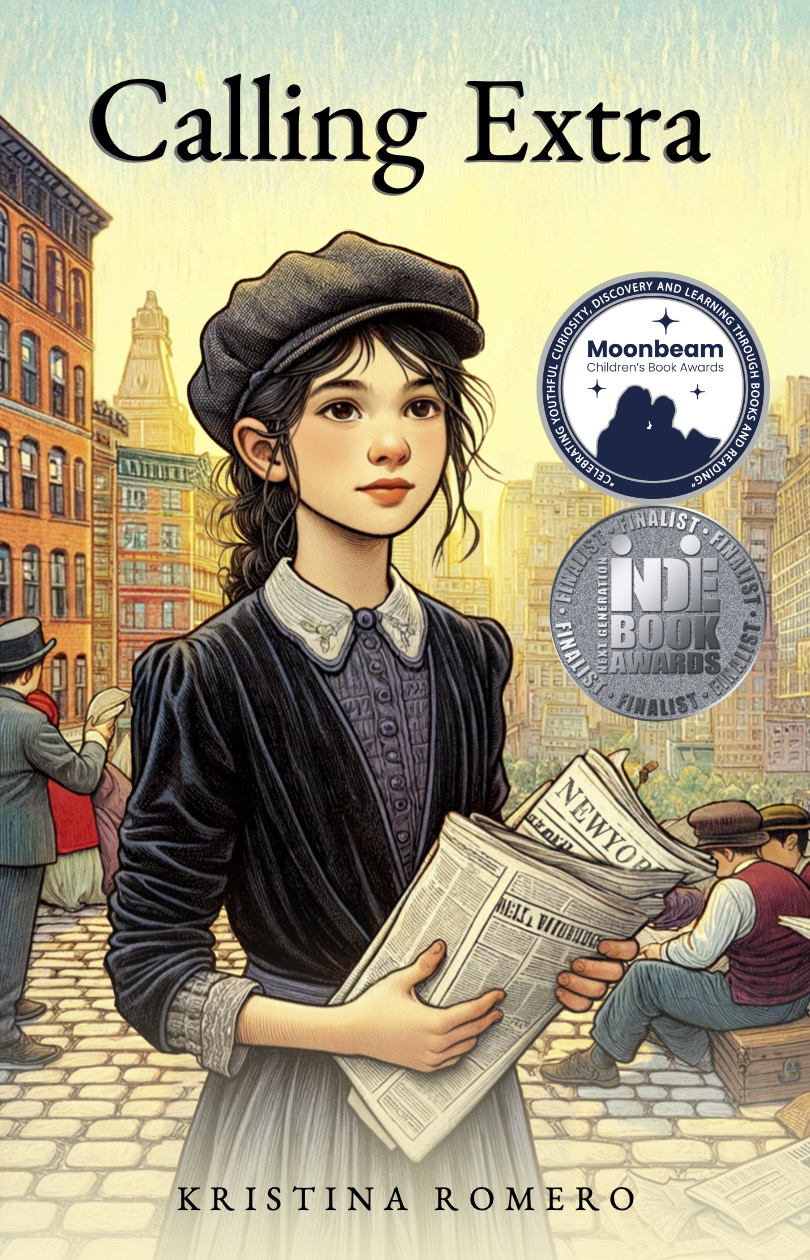2024 Moonbeam Children's Book Award Silver Medalist
(Pre-Teen Fiction - Historical)
2024 Indie Book Awards Finalist (Children's/Juvenile Fiction)
In turn-of-the-century New York City, young Elsie Lutz must face life alone after her father's wrongful imprisonment. Her odds change when she meets Grin, a mysterious teenage newsboy with a kind heart. Together, they get caught up in the exhilarating newsboy strike of 1899, an actual event that had children labor fighting for fair pay. Through challenges and setbacks, Elsie discovers the power of her voice as she attempts to free her father and help her new friends. Follow Elsie's thrilling quest for justice and self-discovery in a world where young voices can make a big difference.


"Calling Extra" is a novel that revisits this tumultuous time in American history. It’s both a book about recognizing the power in one’s own voice to make a difference and a novel that explores the child labor movement, immigration and the impoverished slums of New York at the dawn of the twentieth century. As Grin and Elsie try to survive the city, they encounter many iconic figures of their place and time. This work of historical fiction attempts to honor this momentous era, while telling a compelling story about how friendship, brotherhood and sisterhood influence our lives in ways we may never fully realize.

The Real History

In Calling Extra, Elsie’s personal stories, as well as her adventures with Grin, are interwoven into the real timeline of the 1899 newsboy strike. Click the link below for dates and events from the strike gathered together from the newspaper articles of that time. These references include the New York Times, the New York Tribune, the New York Sun, and the Brooklyn Eagle.
The names of all the newsboys mentioned in this book were recorded in New York’s other newspapers in 1899: the New York Tribune, the New York Sun, the New York Times, and the Brooklyn Eagle, who were more than happy to write about the circulation loss suffered by their rivals. These papers give a colorful portrayal of the newsboys and their fight. View the real history to better understand the events portrayed in the book, such as the meeting at Irving Hall, the conflicts and arrests of the boys who soaked scabs, and the alleged betrayal carried out by Kid Blink and Dave Simmons.
